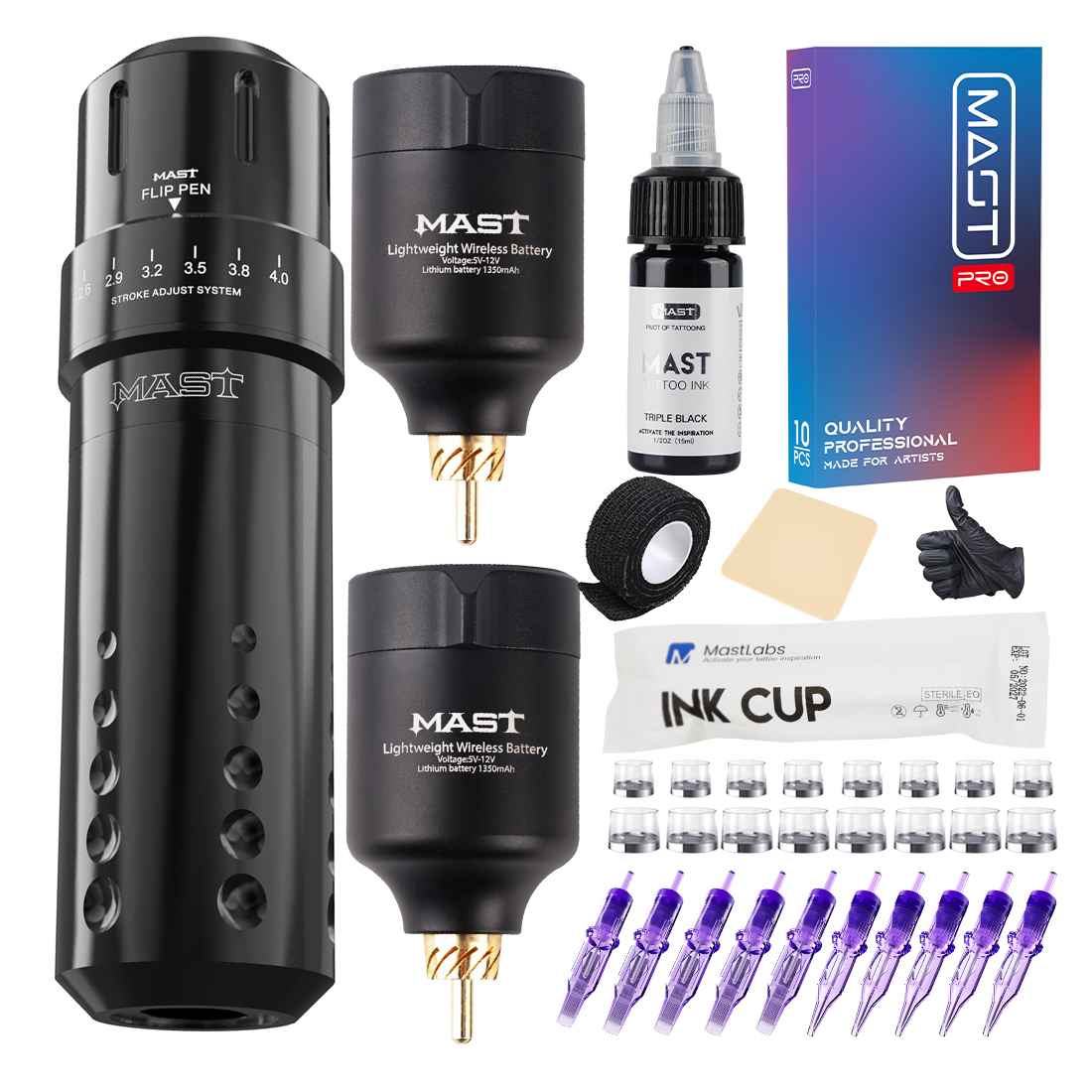Red is a vibrant, eye-catching color that makes a bold statement in tattoo art. However, over time some people may decide they want their red ink tattoos taken off.
This raises the question – can you remove red tattoo ink successfully without any issues?
The short answer is yes, red tattoo pigments can be broken down and cleared from the skin through laser treatments. However, red ink poses some unique challenges compared to other colors.
In this comprehensive guide, we’ll cover everything you need to know about red tattoo removal. Read on for an overview of laser removal processes, why red pigment is trickier to eliminate, recommended treatment methods, what to expect during removal, aftercare tips, and results you can expect when erasing a red tattoo.
How Laser Tattoo Removal Works
The standard process used today for taking out unwanted ink is laser tattoo removal. Here’s an overview of how it works:
- Short laser pulses target and break up pigment particles deep in the skin.
- The body’s immune system recognizes these particles as foreign and flushes them out over time.
- Treatments are repeated every 6-8 weeks as more ink is eliminated between sessions.
- Typically 6-12 treatments are needed to fully clear a tattoo, depending on size and ink colors.
- Q-switched lasers that deliver high intensity beams in nanoseconds specifically target tattoo pigment while minimizing damage to surrounding skin.
Why Red Tattoo Ink is Harder to Remove
The composition of red tattoo ink makes it more challenging to remove compared to other colors:
– Deeper Red Pigments – Some reds utilize more deeply embedded pigments that lasers struggle to reach.
– Densely Packed Particles – Reds often use highly concentrated, densely packed pigment particles. These are harder to break up.
– Broad Absorption Spectrum – The wide light absorption range of reds means they reflect back less laser energy, reducing effectiveness.
– High Iron Oxide Content – Many reds contain iron oxide particles which resist laser breakdown.
– Carbon Base – The carbon base in some reds heat up easily, spreading thermal energy and limiting shattering of particles.
– Angled Pigments – Jagged forms of pigments like cadmium red deflect laser light, making them tougher to destroy.
While certainly more stubborn, even difficult red pigments can still be successfully treated with the right laser at the right settings.
Also Read: How to Get Tattoo Ink Out of White Clothes: A Complete Step-by-Step Guide
Recommended Laser Types for Red Ink
Certain laser wavelengths and types have advantages when it comes to breaking down red tattoo ink:
– PicoSure – The pioneer picosecond laser. Its ultra-short bursts drill down faster before heat dissipates into skin. Highly effective on reds.
– Picoway – Uses a unique picosecond laser focused on pressure waves to better shatter pigments. Great for red ink removal.
– Spectra – A nanosecond laser tuned to a red spectrum for enhanced absorption and breakdown of red pigment particles.
– Ruby – This 694 nm wavelength laser is designed specifically to target darker red and purple pigments.
More powerful picosecond lasers tend to yield better results on stubborn reds in fewer sessions. Consultation with an experienced laser technician is recommended to determine the best laser option based on your specific red ink composition and skin tone.
Treatment Approach for Red Tattoo Removal
To most effectively treat red tattoo ink, technicians adjust various laser settings:
– Wavelength – Tuned to red ranges like 694 nm for optimal light absorption.
– Energy Level – Using maximum levels the skin can handle provides more disruption of pigments.
– Pulse Duration – Picosecond bursts have advantages over nanoseconds for shattering red particles.
– Spot Size – Smaller spot sizes help concentrate energy delivery into the tattoo.
– Pulses Per Area – More repeat pulses breaks up more pigment particles before heat diffusion occurs.
Higher fluences or density settings are also often used. Technicians also adjust protocols based on how the ink responds from one session to the next.
Also Read: How to Get Rid of a Lip Tattoo: A Complete Removal Guide
What to Expect During Red Tattoo Removal Sessions
Here’s an overview of the laser removal process:
– Eye Protection – Safety glasses are worn by both the technician and client during treatments.
– Laser Setup – Technician calibrates settings tailored to red pigment treatment.
– Skin Preparation – Treatment area is cleaned and prepped. An air cooler device may be used to help soothe skin.
– Laser Pulses – Bright rapid pulses are delivered over the tattoo, felt as a pricking or snapping sensation.
– Ink Fading – The tattoo will fade somewhat and turn a lighter red color as pigment particles are broken down.
– Post Treatment Care – The treated area is cleaned, iced, and covered with a sterile bandage or non-stick dressing.
Sessions typically last less than 30 minutes depending on tattoo size. Mild swelling, redness and sensitivity can be expected afterward.
Aftercare for Red Tattoo Removal Sessions
Proper care between sessions helps the body clear out shattered ink particles for maximum removal. Tips include:
– Cleaning – Gently clean the area daily using antibacterial soap and water. Avoid scrubbing.
– Moisturizing – Apply fragrance-free lotion 2-3 times a day once initial soreness subsides to keep skin hydrated.
– Avoid Picking – Let any scabs or crusting shed off naturally. Picking can cause scarring and pigment to redeposit.
– SPF – Use sun protection of at least SPF 30 on treated skin to avoid burns or dark spots.
– Cool Compresses – Wrap ice or cool packs in a cloth and apply for 10 minutes a few times a day to help soothe inflammation.
– Loose Clothing – Wear loose breathable fabrics over the treated tattoo while healing to prevent abrasion.
Avoid swimming, tanning, and sweating until skin recovers after each session. Unethical technicians may recommend “scrubbing out” ink – this causes serious trauma and scarring and should never be done. Let the body’s immune system naturally flush out particles.
Also Read: How to Remove a Tattoo With Milk: Examining the Method
Expected Results After Professional Red Tattoo Removal
With consistent treatments, the following can be expected:
– First Session – The lines appear lighter and turn dull or grayish red. About 25% fading overall.
– Second Session – 50% of the red pigment is gone, exposing underlying skin in parts. Tattoo looks noticeably lighter.
– Fourth Session – About 75% of the red is removed. Outline is blurred with patches of skin showing through.
– Sixth Session – Up to 90% of the red tattoo ink is eliminated. Only a very faint shadow remains.
– Eighth Session – Near total removal is achieved. At least 95% of the unwanted red ink is cleared from the skin.
– Tenth Session – For full dense red tattoos, a tenth session may ensure every last trace is gone. The area looks similar to pre-tattooed skin.
Sessions are spaced 6-8 weeks apart for optimal fading. While 10+ sessions may be required for complete removal, the majority of visible red ink will be cleared within 6 treatments.
Trying to Remove Red Tattoo Ink at Home
Frustrated by the process length and cost of professional laser removal, some people attempt do-it-yourself methods to erase red tattoos.
Options like salabrasion (salt scrubbing), acid peels, dermabrasion devices or ointments claiming to draw out ink may seem cheaper and faster.
However, these options come with serious risks like:
– Permanent Scarring – Aggressive abrasion damages skin leading to raised, uneven scarring.
– Skin Infection – Inducing trauma at home leaves an open door for bacteria to enter and cause infection.
– Allergic Reaction – Acids, abrasives and some ointments can cause painful inflammatory responses in some people.
– No Ink Removal – Most DIY methods do not actually remove any ink particles, just damage the skin surface.
– Ink Redistribution – Harsh abrasion can drive pigment deeper into layers of skin rather than removing it.
– Incomplete Removal – Only lasers can fully break down and eliminate tattoo pigments from the body.
For safe, effective removal minimizing risks, consult an experienced laser technician for red tattoo elimination. Avoid dangerous at-home DIY methods that can do far more harm than good.
Also Read: How to Remove Glitter Tattoos at Home: A Complete Guide
Finding a Qualified Laser Tattoo Removal Professional
If you have an unwanted red tattoo you wish to erase, make sure to see a properly accredited removal professional. Here are tips for finding qualified help:
– Check Credentials – Look for technicians licensed by the American Society for Laser Medicine and Surgery.
– Seek Specialization – Find those focused specifically on laser tattoo removal who train extensively.
– Review Experience – Check years in practice and number of removals successfully performed.
– Ask About Equipment – Modern picosecond lasers yield better results, especially on reds.
– Set a Consultation – Have them assess your tattoo and advise the best approach for removal.
– Compare Pricing – Beware absurdly cheap deals that signal lack of proper accredited equipment.
– Read Reviews – Check reviews from objective third party sources like Yelp rather than the clinic’s own website.
– Trust Your Gut – If ever unsure, get a second opinion on recommended treatment plans.
What to Know About Future Tattoos If Removing Red Ink
Once cleared, some do opt to get re-tattooed. If this may be the case, keep these considerations in mind:
– Wait 6 Months – Ensure all traces are fully gone and skin is healed before re-tattooing treated areas.
– Avoid Red Again – Stay away from problematic red shades and densities that proved hard to eliminate.
– Go Lighter – Choose less concentrated pigments and inks that laser readily like yellows or greens.
– Consider Black Only – Black linework is the easiest and safest to remove if ever wanted gone.
– No Re-tattoo After 10 Sessions – Multiple laser treatments may degrade skin integrity too much for reinstating ink.
– Know Second Removal Is Harder – Once skin is scarred, removing subsequent tattoos becomes riskier.
If reinstating a tattoo after removal, carefully assess ink colors and densities. Alternately, consider going clean-slate with no new tattoos.
Also Read: Does Tattoo Ink Stain Clothes? A Comprehensive Guide
The Takeaway: Can You Remove Red Tattoo Ink
Eliminating an unwanted red tattoo presents unique challenges compared to other colors, but is certainly achievable using the right laser removal approach.
With a trustworthy professional, proper protocols and care between sessions, bright red ink can be fully cleared from the skin with minimal side effects. While needing patience through multiple treatments, you can successfully erase a regrettable red tattoo for good.
Common Questions About Red Tattoo Removal
Here are answers to some frequently asked questions about removing red tattoo ink:
How many sessions does it take to remove a red tattoo?
Most red tattoos require 6 to 10 sessions spaced 6-8 weeks apart for complete removal. Smaller or less dense tattoos may clear in closer to 6, while larger dense reds may need closer to 10.
Does red tattoo ink leave a stain after laser removal?
With full professional treatment, no staining should remain once all pigment particles are eliminated from the skin. If traces of discoloration linger, more sessions are needed.
Is it easier to remove red or black ink?
Black ink is the easiest to remove, requiring fewer sessions. Red is more stubborn due to factors like deeper pigments and broad light spectrum absorption.
What color is the hardest to remove?
Bright turquoise, purple, yellow and fluorescent ink shades tend to have the most stubborn pigments that resist laser break down. Red is also one of the trickiest colors for removal.
How do you fade red ink?
Using picosecond laser treatments focused on red wavelengths is the only way to successfully and fully break down and clear out embedded red tattoo pigments.
Does laser tattoo removal hurt more on colored ink?
Yes, laser sessions on tattoos with color especially reds, purples, yellows and other bright shades tend to feel more painful due to needing higher intensity settings.
Can you remove a tattoo in 3 sessions?
Very few tattoos can be fully cleared in just 3 sessions. Most require 6 to 12 sessions based on ink color, density, amount of ink used and other factors.






